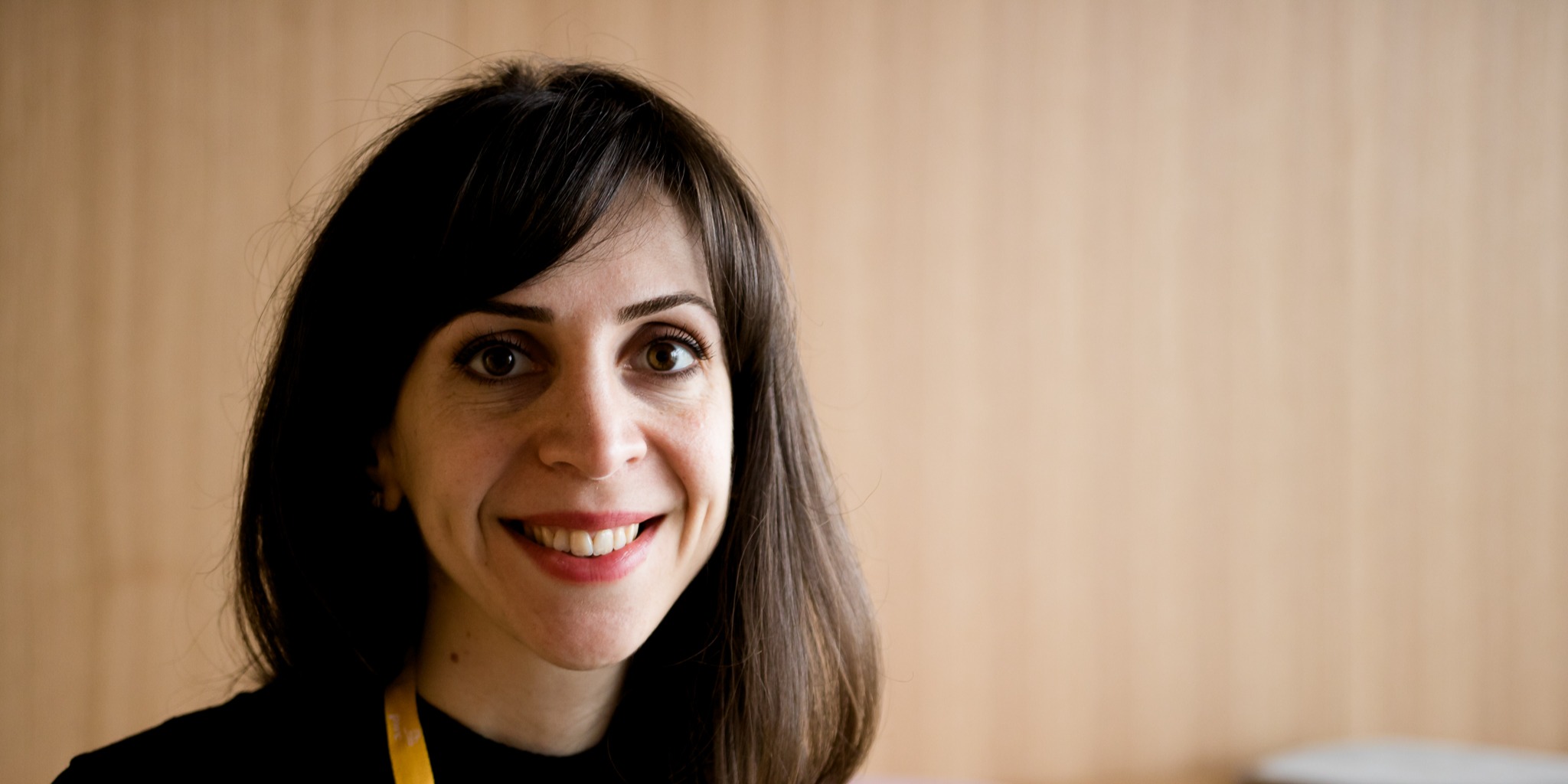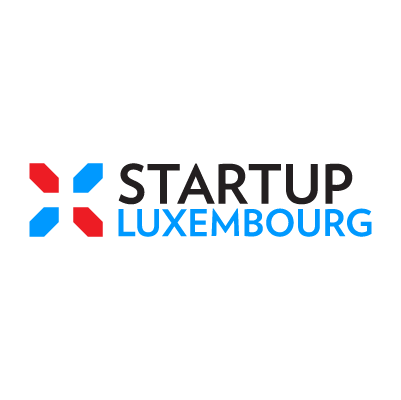Two women from the technology transfer office, Oxana Turtureanu and Anna Oleshkevych at the University of Luxembourg's Interdisciplinary Centre for Security, Reliability and Trust (SnT) discuss their unique backgrounds and how they found their way to the tech field.
Originally from Moldova, Oxana Turtureanu has a background in Economics and holds two Masters, one in Economics and another in Entrepreneurship and Innovation from the University of Luxembourg. With a robust professional journey spanning over a decade in finance and tech, she now serves as a Technology Transfer Officer at the University of Luxembourg's Interdisciplinary Centre for Security, Reliability and Trust (SnT). Currently she is running the Spin-off Acceleration Programme at SnT with the aim to launch technology startups based on research results of SnT researchers.
Her Ukrainian colleague at the SnT, Anna Oleshkevych, has a rich a background in material science. After completing her PhD and Postdoc, she made a pivotal career shift at the University of Strasbourg, transitioning from a researcher to a research project manager for a European project. Anna now serves as a Project Officer at the SnT Technology Transfer Office (TTO), where she plays a crucial part in bridging the gap between research and society.
Both women discuss their careers in technology, role models, facilitating the tech transfer process, women’s experiences in research and the ever-changing tech scene, among other topics.
How did you begin your careers in tech and what motivated this decision?
Oxana: I started my career in a bank before e-banking was a thing. The transition to digitalisation fascinated me: automating manual processes, streamlining payments, and giving more control to customers while saving costs. In Luxembourg, I combined my banking experience with a passion for tech, co-founding a fintech startup during my entrepreneurship master’s programme.
Anna: My fascination with natural science and physics led me to pursue a PhD. After quenching my curiosity in basic sciences, I wanted to explore applications and the positive impact on society. This shift in focus motivated me to move from hardcore science to supporting researchers in delivering impactful results, ultimately leading to my current role at the Technology Transfer Office at the SnT which has a dedicated strategy to work with stakeholders from Luxembourg.
Did you have any role models?
Oxana: Growing up in Eastern Europe, there weren’t too many inspiring models that I could emulate. But I grew up with the fundamental values instilled by my family like hard work and perseverance.
Anna: I deeply appreciate every supervisor that I've had during my PhD. Mary Curie was an inspiring role model. Besides her two Nobel prizes, her achievements in science, even during a time of great gender imbalance and lack of resources, are inspiring.
Enabling collaboration between academia and industry is a key part of tech transfer. How do you go about this process at SnT?
Anna: At SnT, effective collaboration is a priority. We follow a collaborative research model, where both academia and industry share risks, outcomes and costs equally. Continuous learning from partnerships helps us improve. We have researchers who are motivated to produce something that is not only basic science but can also be used and applied. The ultimate goal is for research to be taken from academia, and then through partnerships, reach society.
What are some common challenges in the transition from research to practical applications and market launch?
Oxana: Three main challenges in launching university spin-offs are people, product, and money. Transforming a raw piece of technology into a viable product requires talented people with multiple skills, both technical and commercial. You need team players who are good at marketing, sales, and product management. Also, research does not equal product.
You can have the most advanced technology in your lab, but if no-one wants it, you don’t have a product. Investing time and resources in market research, technology applications and competitive analysis is absolutely critical.
The same goes for testing early-stage products with actual customers, a step that is frequently overlooked. Finally, you can have the best team and a solid plan to build the shiniest product, but if you don’t have the funding you need, you’re not going to get far.
Anna: When collaborating with industry, the challenges are slightly different than in the spin-off case. The challenges for researchers are less with the market understanding or team composition but rather ensuring that there is strong alignment between what the researchers deliver and what the company needs. While factors like expertise and funding also play crucial roles, bridging the technology readiness gap between research and product is challenging. Support from organizations like FNR and Luxinnovation helps bridge this gap.
Can you discuss a successful case where the SnT TTO contributed to the commercialisation of a technology?
Oxana: Wavy Meet, a medical telecommunication platform, originated as a research project at SnT. Being in the SnT ecosystem and part of Acceleration Programme, with the support of IP and business specialists, the team behind Wavy Meet obtained funding from FNR. Then, after successfully testing the technology and receiving further training from TTO and its associates, the team was selected and graduated from Luxinnovation’s start up acceleration programme Fit4Start.
What challenges do female researchers face, and what solutions do you propose?
Oxana: First, there aren’t too many women in R&D to begin with, so promoting diversity and equal opportunity is critical. Second, career progression remains a major concern, as women generally lack access to top positions. We cannot solve this problem unless we make bold commitments to advancing women and building support networks for female researchers. Last, there is an array of biases that are causing severe disadvantages for women in R&D. For example, female researchers are more prone to undertake administrative tasks and assertive women are more likely to be viewed as unlikable or unpleasant. Tackling these biases in a systematic, institutional way is paramount.
At SnT, we suffer from the same level of gender imbalance as usual in the ICT sector. To address this imbalance, SnTh undertakes several institutional measures, such as an Equality Working Group. This has already led to tangible results such as the last FNR JUMP funding round, which had 3 projects from SnT, all of which had female contributors.
Anna: Although there isn’t equal distribution everywhere in academia, for instance, we see more women in chemistry and fewer women in physics, I believe it is changing. If you look at the master's or PhD level, you will find a lot more women, which to me is an indication that the new generation is realising that technical science is not just for men.
Nevertheless, when you move to the Postdoctoral or professorship levels, this is when you see a drastic decrease in the number of women in these positions. Encouraging talented women to progress to professorship positions requires systemic changes in the entire academic setting.
In entrepreneurship, women's perfectionism can also delay market entry, contrasting with men who sometimes prioritise speed over perfection. The solution for female entrepreneurs is to be more proactive and act fast, because new technology changes swiftly in the R&D field, and if you wait too long, you may miss opportunities, or your solution could become obsolete.
What advice would you give to women pursuing a career in technology?
Oxana: Build expertise: develop technical skills relevant in your domain. When you are regarded as an expert, opportunities follow. Talk data: data driven answers grounded in solid evidence contribute significantly to the value and credibility you bring to your team or organization. Be confident: as a data-driven expert, don’t hold yourself back. By confidently expressing your findings and solutions, you encourage an environment where your expertise is valued, respected, and acted upon,
Anna: Passion indicates inherent skills. Be resilient, learn new things, and try to adapt to new environments. I'm an example of this, I went from physics to chemistry to project management and technology transfer, because I never gave up.
.png?width=560&height=280&name=Newsletter%20STL%20designs%20(75).png)
Stay tuned!
Sign up now and receive the latest news about our ecosystem into your inbox.
You May Also Like
These Related Stories

“Women tend to be very risk-averse, and the venture capital sector is very risky and bold”

Empowering the next generation: the importance of building a strong tech foundation






